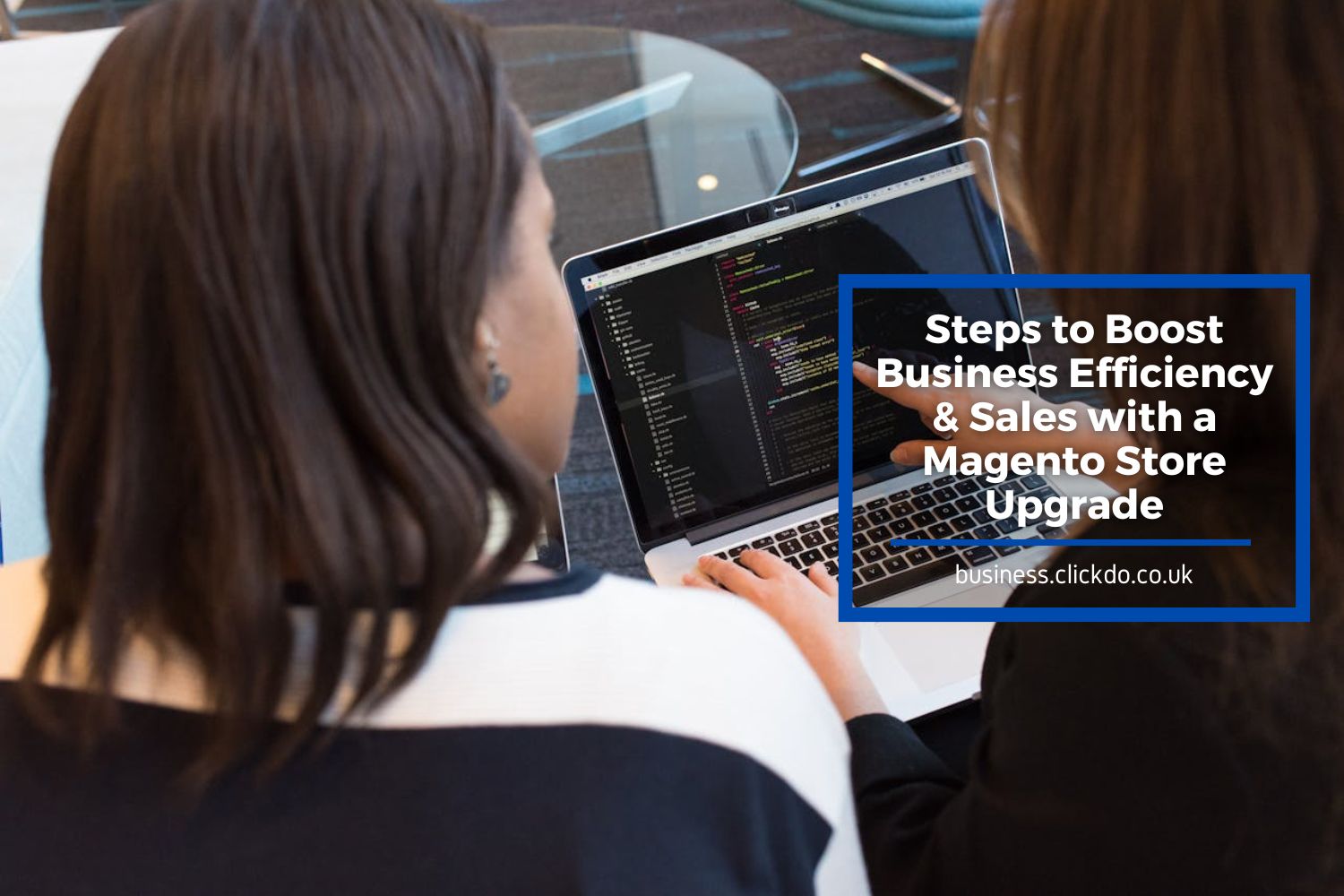Table of Contents
The end of support for the original Magento 1 was a big blow to many online retailers who relied on the platform for their operations.
While some remain on the old version, many have moved to the new, more secure, advanced Magento 2.
If you have not done it yet but are wondering why and how to make the switch, we will provide you with all the core information you will need to start before you even contact any Magento development company.
Understanding the Importance of Software Upgrading
There is no denying the importance of using the most updated software version for many reasons. Security is the primary concern, as an outdated platform can leave your store vulnerable to cyberattacks and data breaches. Additionally, in e-commerce, having the latest features and functionalities can help you get ahead of your competitors and provide a better user experience for your customers.
While migrating to a new version of your platform can be a complex task, the benefits are well worth the effort. Letting your business fall behind due to outdated software can result in financial losses and even legal consequences if customer data is exposed or specific requirements are unmet. Every store owner should prioritize keeping their business up-to-date and operating at the highest level.
Hiring Magento Professionals
An eCommerce application development company can help you make an almost effortless transition to the latest version of Magento, as well as develop professional and customized Magento extensions to enhance your online store’s functionality even further. By investing in professional expertise when migrating, you ensure a safer and more efficient transition process.
This helps minimize the associated risks and lets you focus on other aspects of your business without worrying about the technical complexities of the migration. Additionally, Magento professionals can provide ongoing support and maintenance after the move, so it is worth considering working with them, especially if your in-house team lacks the necessary experience or technical knowledge.

5 Steps for a Magento 2 Migration
If you are interested in performing the move yourself, there are five main steps to follow.
Each is important and needs to be executed carefully to ensure a successful Magento 1 to Magento 2 migration.
1. Assessment and planning:
Start with assessing your current website, including all the extensions, customizations, themes, and data. Evaluate what needs to be migrated and what may be incompatible with Magento 2. Plan the migration process, assign timelines, and allocate resources accordingly.
2. Data backup:
Before you start the migration process, store all your data in a secure location, such as a cloud storage or an external HDD, to prevent data loss in case of any unforeseen circumstances.
3. Testing your idea:
Migration testing is crucial to learn if there are any issues or errors that need to be addressed before proceeding with the actual move. In a testing environment, carefully check all functionalities and integrations to ensure everything is working properly.
4. Migrating:
With Data Migration Tool, the process is more streamlined and efficient, allowing for a smoother transition of data. Once you have it installed, you can configure the migration (in the vendor folder or another module) and start the Magento 1 to Magento 2 migration process. Move all your settings, products, themes, and everything else by using proper commands.
5. Post-migration testing:
It is crucial to conduct thorough testing after the migration before you make the new version of your store public. This will help identify any potential issues without the customer experiencing them, which will save you time and prevent any disruptions to your business operations.
As you can see, migration is not a task that should be rushed, as taking care to test and move everything in a careful manner will benefit you in the long run. If carried out properly, the migration process will result in a successful migration without any major issues or disruptions.

Common Challenges Faced During the Magento 2 Migration
While migrating to Magento 2 has many advantages, you need to be aware of potential difficulties that may arise during the process. If you face any of these roadblocks, it is important to have a plan in place to address them promptly.
This way, you can minimize the impact the delay will have on your business continuity.
1. Architectural issues:
As Magento 1 and Magento 2 differ significantly in their architecture, you may encounter inconsistencies and errors when migrating your data. It is important to test everything thoroughly and make sure all data formats you may have used are supported in Magento 2.
2. Compatibility problems:
Some extensions and plugins meant for the old Magento may not be compatible with Magento 2, and the same applies to themes and customizations. This can lead to functionality issues and will require you to contact developers to ask about a potential Magento 2 update. Not everything can be made compatible with the new version of the platform, so you may need to find alternatives for some of the features you are using.
3. Performance optimization challenges:
The new platform may require additional resources or configurations to ensure optimal performance. Although Magento 2 is a modern, feature-rich platform, you may need to make some adjustments to your tech stack to make the most of all of its potential. Consider upgrading your infrastructure to support the increased demand of Magento 2, if your current setup is not able to handle the requirements.

Should You Migrate to Magento 2?
Even if you think your current platform is enough, consider the many advantages of Magento 2.
From improved performance to better SEO capabilities, the new version of Magento offers a wide range of functionalities and features that can help your business thrive.
Conducting a Magento 1 to Magento 2 migration is a big decision for online store owners. It requires careful consideration of the potential problems and benefits, as well as evaluation of resources and timelines. While not every business can afford or justify the migration, if you want your business to be future-proof and ahead of the competition, migrating to Magento 2 may be necessary.
Author Profile
- Blogger and Educator by Passion | Senior Online Media & PR Strategist at ClickDo Ltd. | Contributor to many Education, Business & Lifestyle Blogs in the United Kingdom & Germany | Summer Course Student at the London School of Journalism and Course Instructor at the SeekaHost University.
Latest entries
 BusinessDecember 2, 2025How to Build an Effective Progression Plan in Your Company
BusinessDecember 2, 2025How to Build an Effective Progression Plan in Your Company BusinessOctober 24, 2025Legionella Risk Assessment: 5 Things Every Entrepreneur Needs to Know
BusinessOctober 24, 2025Legionella Risk Assessment: 5 Things Every Entrepreneur Needs to Know EmploymentSeptember 2, 2025Why Motorbike Accident Staff Claims are a Growing Business Risk
EmploymentSeptember 2, 2025Why Motorbike Accident Staff Claims are a Growing Business Risk FinanceAugust 21, 2025A Swiss Bank Account for Foreigners: Stability, Tradition, and Options for International Clients
FinanceAugust 21, 2025A Swiss Bank Account for Foreigners: Stability, Tradition, and Options for International Clients





